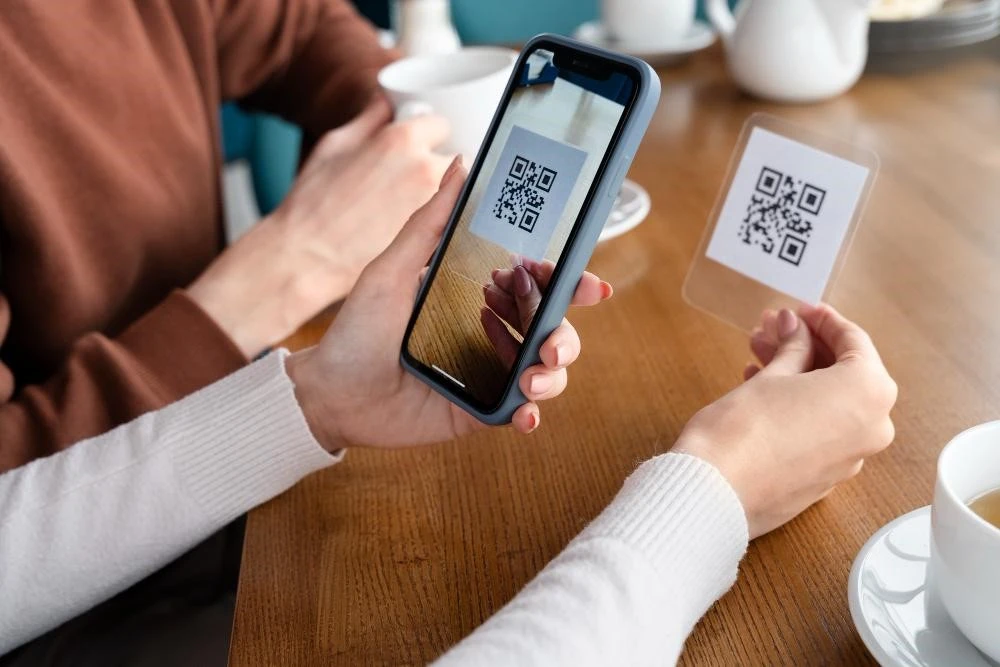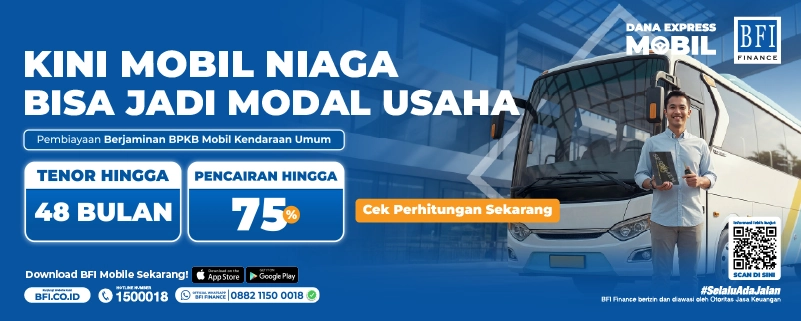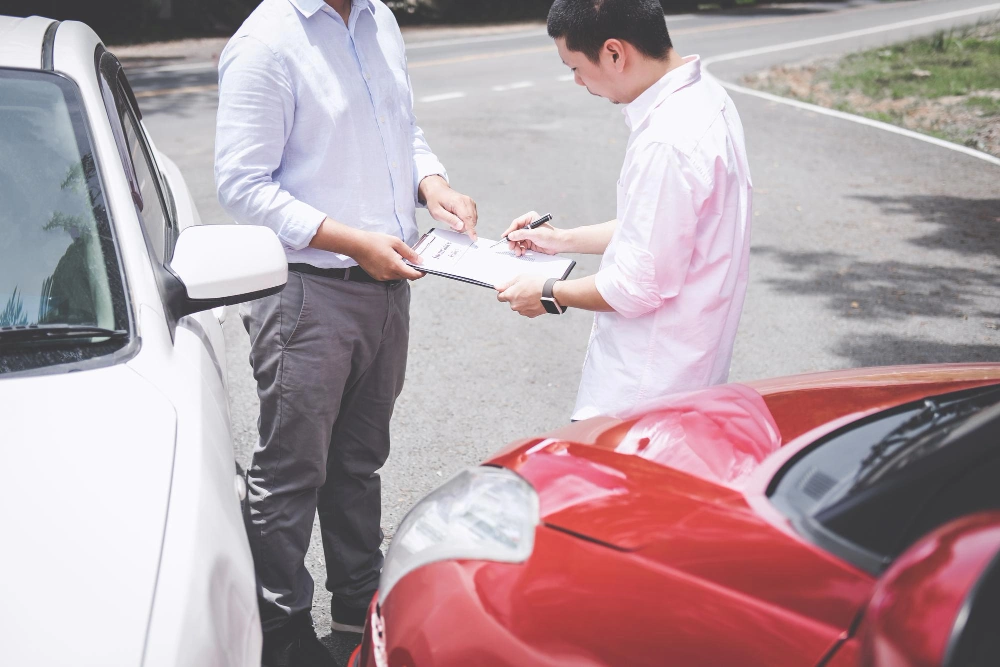In this digital era, the threat of digital crime continues to grow. One of the newest fraud modes that is starting to become popular is quishing, a form of phishing fraud that uses the code “QR”. In fact, the QR code itself is an innovation that has many benefits. However, there are still loopholes for criminals to carry out their disgraceful actions.
If you want to prevent the Quishing fraud method, find out how it works and how to avoid this fraud method in this BFI Finance article.
1. What is Quishing?
1.1 Definition of Quishing
Quishing is an abbreviation for "QR code phishing", which is a fraudulent method that uses QR codes to direct victims to malicious sites or steal the victim's personal information. Fraudsters take advantage of users' trust in QR code technology, which is often used for digital payments, quick access to information, and various other digital services.
1.2 How Quishing Works
1.2.1 QR Code Compilation
Fraudsters create genuine-looking QR codes and distribute them in strategic places, such as posters, emails, social media or websites. This code can be pasted on top of a real QR code or distributed as part of a fake campaign. They can print QR codes and paste them in public places such as notice boards, payment terminals, or even inside physical stores. Apart from that, QR codes that have the potential to be Quishing can also be spread via email or social media by pretending to be a promotional activity from the company.
1.2.2 Redirect to Dangerous Site
When users scan a compromised QR code, they are redirected to a malicious site designed to resemble a legitimate site. These sites typically ask users to enter personal information or log into their accounts. These malicious sites often have a design that is very similar to the original site to trick users into believing they are in a safe place. In some cases, users may be redirected to a page asking them to download malicious software.
1.2.3 Acquisition of Personal Information
These fake sites collect personal information entered by users, such as credit card numbers, passwords or bank account details. This information is then used by fraudsters to commit identity theft. The information collected can be used to carry out illegal transactions, open new accounts in the victim's name, or sell personal data on the black market. Fraudsters often use this information to make more transactions in the name of the victim's account.
1.2.4 User Fraud
After obtaining personal information, fraudsters can use it to access victims' accounts, conduct illegal transactions, or sell the data on the black market. Victims often do not realize that they have been deceived. The impact of this fraud varies, from losing large amounts of money to having to face legal problems because their identity has been used for illegal activities. Additionally, victims may face difficulties in restoring access to hacked accounts.
1.2.5 Potential Hazards
Quishing can have very detrimental consequences. In addition to financial loss, victims can also experience identity theft, where their personal information is used for other illegal activities. In the long term, this can damage your reputation and cause emotional stress. Victims of identity theft may have to deal with authorities to prove that they were not involved in illegal activities carried out in their name. In addition, recovering from a quishing attack can take a lot of time and money, including monitoring and repairing a bad credit score.
1.3 Can Quishing Occur in QRIS Payments?
Yes, quishing can also occur in the QRIS (Quick Response Code Indonesian Standard) payment system. QRIS, which is widely used for digital transactions in Indonesia, can be the main target for fraudsters. They can create fake QR codes that redirect users to fake payment pages, allowing users' banking or e-wallet information to be stolen.
2. Characteristics of Quishing Practice
Knowing the characteristics of fraudulent quishing practices is very important to protect yourself from these cyber attacks. Here are some signs to look out for:
2.1 Promotions from Unknown QR Codes
Quishing scams often offer big promos or discounts that are too good to be true via unknown QR codes. These promotions can take the form of very significant discounts or attention-grabbing free gifts. If a promotion seems too attractive, it could be a scam. Users should always be careful and skeptical of offers that are too tempting.
2.2 Promises Big and Attractive Profits
The promise of huge profits or immediate rewards after scanning a QR code is one common tactic used by fraudsters. For example, QR codes can promise cash prizes, free electronic devices, or exclusive products. They try to attract the victim's attention with tempting lures and tempt the victim to immediately scan the code. However, users should always remember that if something looks excessive and suspicious, it is most likely a scam.
2.3 Forced QR Code Scan
Quishing techniques also often involve forcing people to scan a QR code, for example by saying that a promotion is time-limited or only available to the first few people. This tactic is used to encourage quick, thoughtless action. The scammer may create a sense of urgency by saying that this opportunity is only available for a short time, making the victim feel like they have to act immediately without thinking about the consequences.
2.4 Using a Free Email Address
Scammers often use free, unverified email addresses to send QR codes. This email address may look unprofessional or suspicious if you look closely. For example, email addresses from public domains such as “@gmail.com” or “@yahoo.com” could be a warning sign. Users should be wary of emails that come from unknown sources or that appear illegitimate.
2.5 There are typos or writing errors in the web address
Fake sites used in quishing often have typos or typos in their web addresses. These small mistakes are red flags to watch out for. Fraudsters may change letters or add characters that are nearly invisible to unwary users. Checking web addresses carefully can help identify fraud before it's too late.
2.6 Not Using an Official Domain
Scammers may use a domain similar to the official site but with slight differences, such as using “.net” or “.info” instead of “.com.” These domains often appear legitimate the first time a user sees them, but they are actually imitation sites. Users should be wary of unofficial domains and always check the URL carefully before entering personal or financial information.
2.7 Website Without SSL Security Certificate
Legitimate sites must have an SSL security certificate, which is indicated by a padlock icon next to the web address and a URL starting with "https". Sites without SSL are a clear red flag because they do not offer secure, encrypted connections. Users should always ensure that the sites they visit have an SSL certificate to protect their data from fraud.
2.8 Asking Visitors to Fill Out Personal Information
If the site you visit after scanning a QR code asks for sensitive personal information for no apparent reason, this is a strong sign of quizzing. For example, the site may ask for a credit card number, personal identification number, or login information. Users should always be skeptical of these types of requests and ensure that the site is truly legitimate before providing any personal information.
3. How to Detect Quishing Attacks
Detecting a quishing attack requires vigilance and careful detection steps. Here are some methods to detect quishing attacks:
3.1 QR Code Detection
Users should always check the QR code before scanning it. If a QR code appears pasted or placed on top of another code, this could be a sign of fraud. Check for signs of physical manipulation, such as labels that appear new or different from other QR codes nearby. Additionally, use a good QR code scanning tool that can preview the destination URL before directing users to the site. Reliable scanning tools usually have additional security features that can detect suspicious or malicious URLs.
3.2 Text Analysis
Checking the text or message accompanying the QR code is also important. If the text is full of unrealistic promises or too many writing errors, this is a red flag to look out for. Scammers often use messages that promise big prizes, big discounts, or other benefits to attract victims' attention. Texts that are too pushy or give very short time ultimatums can also be warning signs. Users should always be skeptical of claims that seem exaggerated.
3.3 Writing Errors
Writing errors in web addresses or promotional descriptions are common signs of quizzing. Users should always pay attention to these small details before trusting QR codes. Legitimate sites usually have URLs that are professional and free of typos.
Pay close attention to any letters that have been changed, such as using a "0" instead of an "O" or a "1" instead of an "l." Additionally, make sure the URL uses the correct security protocol such as "https://" which indicates a secure connection. Small errors in promotional text or instructions can also be an indication that the source is not trustworthy.
4. How to Avoid Quishing
Here are some steps you can take to avoid quishing:
4.1 Check the Transaction Information Again
Always check the transaction information before completing a payment via QR code. Make sure that transaction details, such as amount and recipient, are correct and match expectations. Don't rush through scanning and processing transactions; take the time to verify every detail.
4.2 QR Code Verification
Verify the QR code with the original source. For example, if the QR code comes from a poster in a public place, check with the official source or ask the relevant staff. Never scan suspicious or unknown QR codes. Make sure the QR code comes from a trusted and reputable source.
4.3 Regularly Update Banking Financial Applications
Always update your banking financial applications to the latest version. These updates often include security improvements that can help protect users from quishing attacks. Updated apps also usually have additional security features that can detect and prevent malicious QR codes.
4.4 Avoid Providing Personal Information
Never provide personal or financial information through sites accessed via QR codes without verifying their authenticity first. When in doubt, it is better to avoid entering sensitive data. Make sure the site has security protocols such as HTTPS and SSL certificates.
4.5 Use a Secure Internet Connection
Make sure to use a secure internet connection when scanning QR codes and making transactions. Avoid using unsecured public Wi-Fi networks, which can make it easier for fraudsters to intercept data. Use a private internet connection protected with a strong password, or use a VPN network for added security.
4.6 Report a Quishing Website or Application
If you encounter a suspicious QR code or become a victim of fraud, immediately report it to the relevant authorities or service provider. This report can help prevent others from falling victim to the same scam. Additionally, report it to your banking service provider or payment platform so they can take further precautions.
4.7 Use an Antivirus or Antimalware Application
Preventive measures against quishing practices can be taken by installing an antivirus application on your mobile device. Antivirus or antimalware applications can detect and block viruses and malware embedded in QR codes or phishing websites. The disadvantage of being infected with a virus or malware is of course the exposure of personal and financial data to irresponsible parties.
BFI friends, by understanding how quishing works, recognizing the signs of fraud, and taking appropriate preventative steps, users can protect themselves from this threat. Always be alert and skeptical of unknown QR codes, and be sure to verify the source before taking action.
If you have urgent needs and need funds that are disbursed quickly, BFI Finance can be your solution. BFI Finance is a financing company that provides loans guaranteed by car BPKB, motorbike BPKB, and house or shophouse certificates for your needs. With a long tenor, BFI Finance offers disbursement at competitive interest. Apply for your loan now at BFI Finance!







